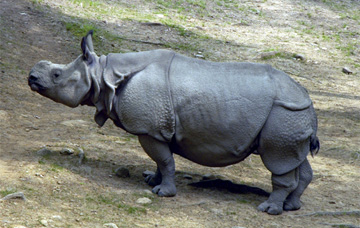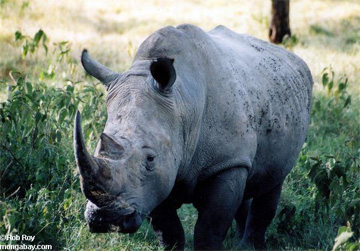|
|
Rhino poaching rates have hit a 15-year-high as a consequence of demand for horns for use in traditional medicine, according to new report published by the wildlife trade monitoring network TRAFFIC. Asia-based criminal gangs run the illegal trade.
“Illegal rhino horn trade to destinations in Asia is driving the killing, with growing evidence of involvement of Vietnamese, Chinese and Thai nationals in the illegal procurement and transport of rhino horn out of Africa,” explained a briefing published by WWF, IUCN and TRAFFIC.
Poaching has risen sharply in recent months, with 12 rhinoceroses now being poached each month in South Africa and Zimbabwe alone. By comparison roughly three rhinos were illegally killed each month in all of Africa from 2000-2005, out of a population of around 18,000.
 Safer to be hornless? The horn of this Sumatran rhino has been removed to ensure it won’t be poached.  Black rhino in Kenya |
Meanwhile about 10 rhinos have been poached in India and at least seven in Nepal since January alone—out of a total population of only 2,400 endangered rhinos.
“Rhinos are in a desperate situation,” said Dr. Susan Lieberman, Director of the Species Programme, WWF-International. “This is the worst rhino poaching we have seen in many years and it is critical for governments to stand up and take action to stop this deadly threat to rhinos worldwide. It is time to crack down on organized criminal elements responsible for this trade, and to vastly increase assistance to range countries in their enforcement efforts.”
“Increased demand for rhino horn, alongside a lack of law enforcement, a low level of prosecutions for poachers who are actually arrested and increasingly daring attempts by poachers and thieves to obtain the horn is proving to be too much for rhinos and some populations are seriously declining,” added Steven Broad, Executive Director of TRAFFIC.
The briefing concludes that governments need “an accurate and up-to-date picture of the status, conservation and trade in African and Asian rhinoceroses, as well as the factors driving the consumption of rhinoceros horn, so that firm international action can be taken to arrest this immediate threat to rhinoceros populations worldwide.”